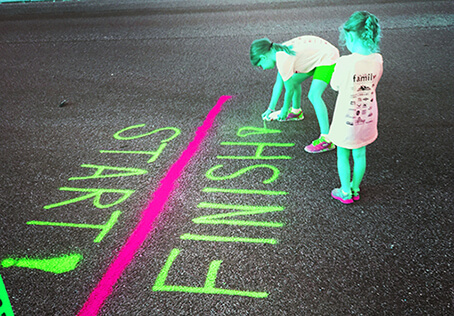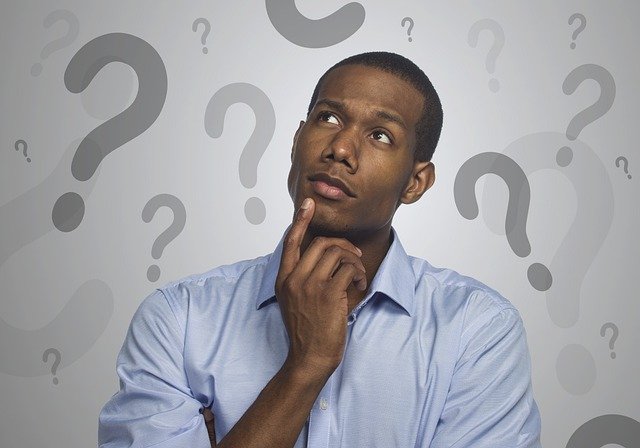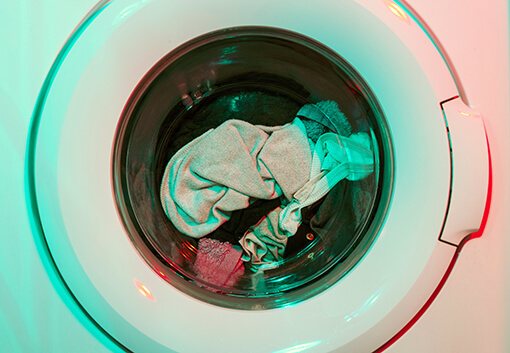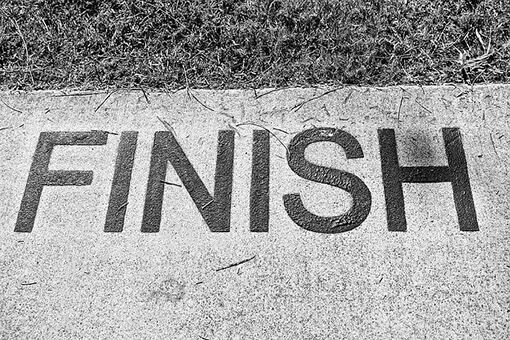Hi. It’s konkaz (@konkazuk) here.

How are you getting on with your daily “self-talk”?
As I mentioned in my last blog post, these forms…
“Future tense”
“Present continuous”
&
“Present perfect”
are the main ones to be applied for “broadcasting your action/thought” with self-talk practice.
We have already gone through the “future tense”, so this time, we will work on the rest that are… “present continuous” and “present perfect”.
Well, let’s check them out.
Present continuous

Come to think of the time when we just started learning English at school, we learn “present tense” before learning “present continuous”, since the “present tense” is a primary verb tense.
The role of “present tense” is fundamentally “to pass along the fact” to someone, therefore its usage is limited to some occasions such as describing your “state of being” (ex. “I’m hungry” or “I feel sick”) or telling your current “activities, fact, habit, etc.” (ex. “I wake up at 6am everyday” or “I like listening to jazz music).
However, when it comes to having an conversation, the situation at the time or people’s “will” is often involved, therefore the “present continuous” with “be + verb with -ing form” and the “future tense” with “will” and “be going to 〜” are used more often than the “present tense”.
For example, when we talk about an act of “eating an apple”, it is often expressed with the “future tense” like…
I’ll eat an apple.
or
I’m going to eat an apple.
On the other hand, you don’t really use the “present tense” like…
I eat apples.
in your daily life, unless somebody asks you like… “Do you eat apples?”.
By the way, let’s continue with the act of “eating an apple” as an example.

When we take some actions, I believe we basically go through the following phases…
① Thinking about doing something.
② We are actually doing it.
③ We have finished doing it.
And apply these for the act of “eating an apple”, it will be…
① I’ll eat an apple. or I’ll have an apple.
⬇︎
② I’m eating an apple. or I’m having an apple.
⬇︎
③ I’ve eaten an apple. or I’ve had an apple. or I’ve finished eating an apple.
Therefore, it naturally proceeds like…
“Future tense” ➡︎“Present continuous” ➡︎ “Present perfect”
Well, the topic of this chapter has slightly gone off the track, but I just wanted to explain for those who could be wondering why the “present tense” has not been included in the three tenses which are often used for broadcasting our action/thought in real life…

Anyway, we are going through “Present continuous”, and I believe it will be the most “straightforward” one among the three.
All you have to do is just say what you are doing by using the form of “be + present participle (verb + ing)“
Anyway, read the following sentences “aloud” so that you will get used to the form of “present continuous”.
I’m thinking.
I’m thinking about what happened today.
I’m wondering how I can explain about what happened today in English.
I’m not thinking about anything at all.
I’m wondering if they have arrived home safely.
I’m walking.
I’m walking to the bus stop.
I’m listening.
I’m not listening to you.
I’m listening to music.
I’m listening to their conversation.
I’m talking.
I’m talking to myself.
I’m talking to myself in English.
I’m standing.
I’m standing alone.
I’m standing alone in this horrible weather.
I’m brushing my teeth.
I’m preparing for my dinner.
I’m trying to learn to play the guitar.
I’m trying to understand what he really meant.
I’m trying to lose my weight.
I’m giving up!
I’m not giving up!
…And for the sentences whose subject is other than yourself…
The water is boiling. or It’s boiling.
It’s leaking from the ceiling.
My head (shoulder, stomach) is aching.
The alarm is going off.
The fan is making funny noise.
The typhoon is approaching.

The colour is turning to red.
The dog is barking.
Try speaking out (not in your mind) whatever you are doing, or whatever is happening round you at the time.
If you want to develop your speaking skills, no progress will be made without using your voice!
And finally, if you can use the “Present continuous” along with what is explained in the last article 【English future tense】 Understanding when to apply 3 different forms!《Eigo-jiru vol.9》 , it will be pretty good for the time being!
Present perfect

Right.
Here, we are going to work on the “Present perfect” whose form is applied to express the completion of your act or an event that has been going on till present.

We all learnt about this at some point during our compulsory education period, however, I guess some of us might not remember how it works, so let’s take this opportunity to revise a bit.
Back in the day when we were at school, we learnt four types of “present perfect” that are to express…
① Action/event that are just completed
② Life experiences (up to the present)
③ Unfinished actions (for something that started in the past and continues in the present)
④ Finished actions (present result caused by the past event)
however, here, we are going to give focus to only “① Action/event that are just completed”, therefore, please forget about ②, ③, and ④ for the time being. (I will explain them some other time.)

If you are slightly confused about when to use the “present perfect”, I think it makes easier for you to understand if you take the past event and the present event as a “dot” or a “point” in the continuous time.
The “Present perfect” is applied when you express…
the action/event that began at some point in the past and completed at the present point.
and it has got the structure of…
have (has) + past participle.
For example,
(Perhaps this is not the best example, but easy to understand… so…)
The granddad who was born at some point in the past has just passed away in front of his son like… “M… my son…, I’ll…I’ll leave the things… to ..you… ” (with the noise of sinking down.)
Then, the son could say…
He has just passed away.
with the form of “present perfect”.
(pass away = polite expression for “die”)
The adverb justand already are often used together with the present perfect.

On the other hand, the “Past perfect” (I’m not going into details about the past perfect here, but I picked this because I thought it would be a good reference to comprehend the “present perfect”) is applied when you express…
the action/event that began at some point in the past and completed later at some point in the past.
and it has got the structure of…
had + past participle.
For example,
(I’m sorry but… here, I am featuring “granddad” once again for the sake of simpler comprehension…)
Despite the fact that the son kept calling his granddad, there was no sign of him picking up his phone, therefore, the son decided to go and see him directly. When the son arrived and went into his place, he found that his granddad had already passed away.

Now, if you look at the grandad’s death from the point of his son’s arrival, whether it happened ten hours ago or just three minutes ago does not really matter. It happened at some point in the past.
Thus, his son could say…
When I visited his house, he had already passed away.
with the form of “past perfect”.
Example sentences with the Present perfect form

While you are carrying out “self-talk”, I presume you will eventually come across the situation where you wonder if you should use the “present perfect” or simply applying the “past tense”.
The point to choose the “present perfect form” is that…
You started what you are doing at some point in the past and continued it until now.
For example, you have been writing an email for somebody, and you have just finished it and pressed the “send” button. You could say…
Phew. I’ve sent an email at last!
or if you want to express it with the passive form, it will be…
The email has just been sent!

“Just” is applied very often to the present perfect form, therefore making a habit of putting “just” after “have (has)” whenever you feel the vibe of it could be a nice move…
Next one!
The parcel is meant to be delivered to your address this morning, and you have been waiting for it for some time… and then, you hear the doorbell ringing and see the delivery guy walking in…
Here, you can say…
The delivery has just arrived.
Or if you want to emphasise the fact that you were waiting for it long enough, you can use “finally” instead of “just”.
The delivery has finally arrived!
You hear the beeping sound that tells you the end of its program from the washing machine, here, you can say…

The washing has just been done!
You have been charging your mobile phone… and now, you see the digits turning to “100” % on its screen. You could say…
My mobile phone has been fully charged.
You are checking your driver’s license card and it is telling you that it was valid until… oh, no… yesterday!!!
My driver license has just expired!
Let’s try some negative sentences, too!
You are checking the chicken in a pan and have found that its colour is still a bit reddish.

You can say…
The chicken has not been cooked yet.
You are about to go to bed and just realised that you had forgotten to do your homework.
Oops! I haven’t finished my homework yet!
While “just” and “already” are frequently used in the affirmative sentence of the present perfect form, “yet” is often used in the negative sentence of the same form, just like…
I haven’t taken a shower yet.
I haven’t told her the truth yet.
I haven’t brushed my teeth yet.
I haven’t bought my ticket yet.
I haven’t made a payment yet.
And one more thing to note…
As the case can be spotted in the sentence of “homework” earlier, the verbs such as “finish” and “complete” are often used together with the present perfect from.

I have finished my lunch.
I have finished all my exams.
I haven’t finished my beer!
I have just completed this book.
I haven’t completed my task yet.
If you would like to tell what kind of action has been done, you can turn the verb form into the present participle, and put it after the structure of have + past participle form of “finish” or “complete”.
Hence, if we use the examples above, they will be…
I have finished eating my lunch.
I have finished doing all my exams.
I haven’t finished drinking my beer!
I have just completed reading this book.
I haven’t completed doing my task yet.
Right. So, this is it for this time’s blog post.
Let’s proactively use the last article’s “Future tense”, and this time’s “Present continuous” & “Present perfect” for our daily “self-talk” practice in order to brush up our speaking skills!

We can seriously boost up our speaking skills by doing the above, so let’s keep it up!
konkaz
*You can read this blog post in Japanese from the link below.
👉 英語の現在進行形と現在完了形で独り言をつぶやく!!!《英語汁 第10号》

